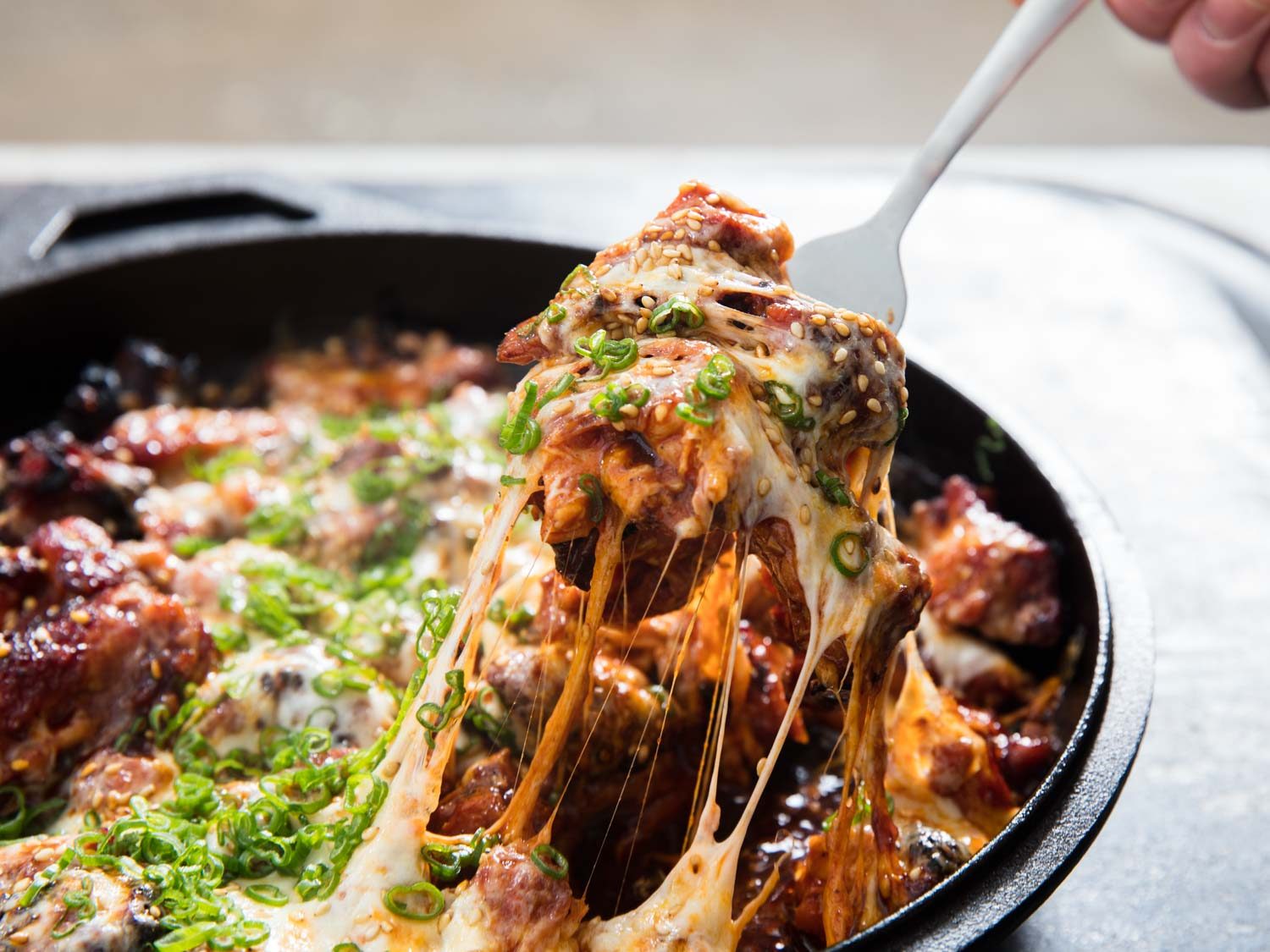
[Photographs: Vicky Wasik]
I wasn’t aware of Korean drinking food, called anju, until I moved to Chicago and began cooking at a Korean-inflected restaurant. We didn’t have anju snacks on the menu, but after getting through Saturday night service, a bunch of us would often end up at Dancen, a Korean bar that specializes in the kind of food you want to eat with a few drinks and some friends. The dishes are spicy, salty, funky, sweet, and shareable.
The best item on the menu is its rendition of buldak, which translates to “fire chicken.” It’s a simple dish of chargrilled chicken (dak) thighs, slathered in a spicy gochujang-spiked glaze and topped off with a layer of gooey, melted cheese. It’s messy, greasy, bar-food perfection. There are some dishes that I think about a lot, and Dancen’s fire chicken is one of them. Seeing as I can’t hop on a flight to Chicago every weekend, I decided to try making buldak myself.
Raging Bul: Building and Balancing Heat
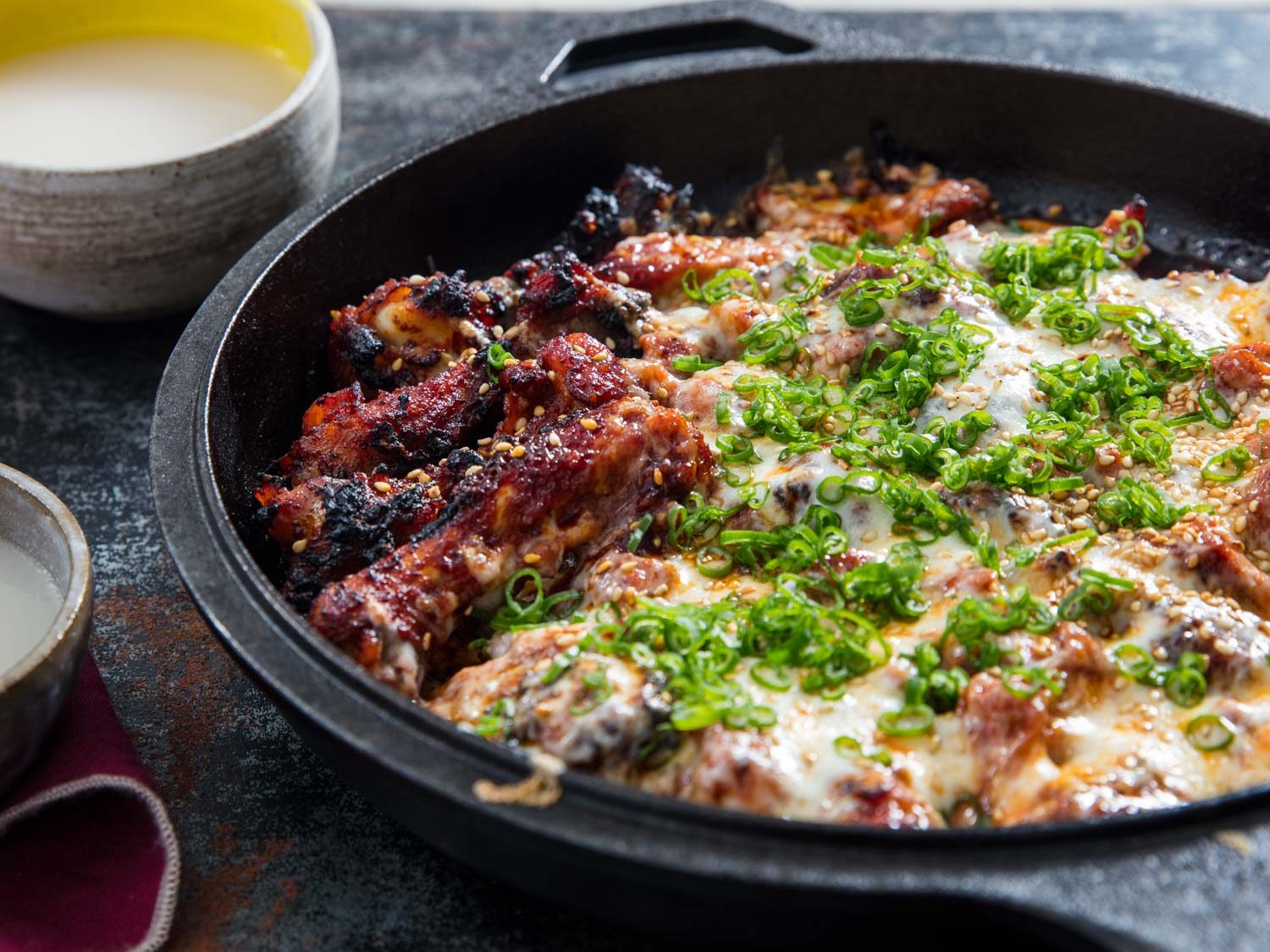
The fire (bul) of buldak starts with its sauce, which uses a number of Korean pantry staples to build layers of nuanced heat. This heat is tempered by sweet and savory ingredients, as well as fresh aromatics, to make a sticky, spicy glaze that acts as a marinade as well as a sauce.
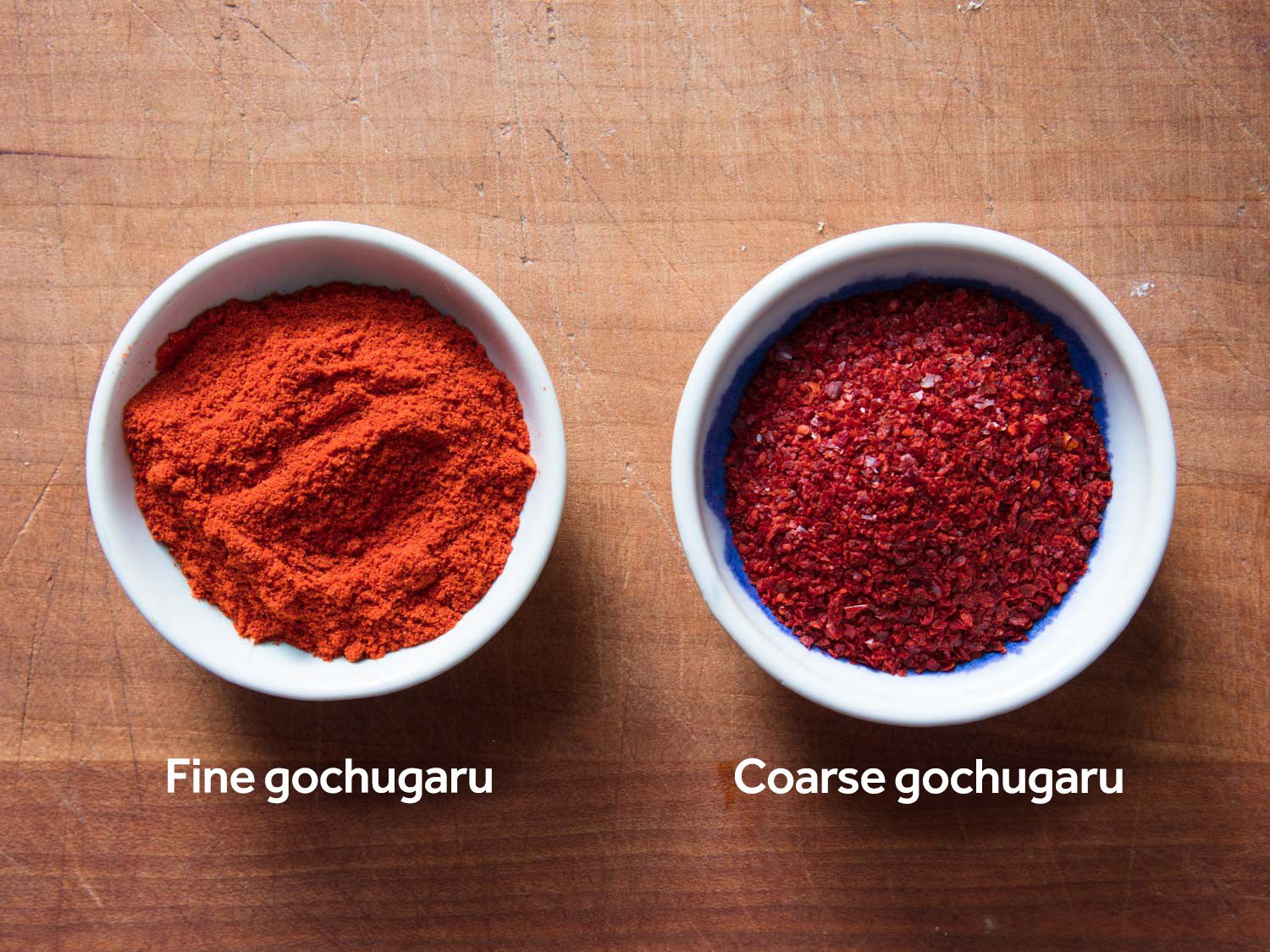
Gochujang and gochugaru chili powder form the base layer of heat for the sauce, with gochujang lending its characteristic fermented funk and gochugaru providing floral and smoky notes. Gochugaru is sold both coarsely and finely ground. For this application, we want the gochugaru to meld into a mostly smooth sauce, so I use finely ground gochugaru. The coarse ground version will work in a pinch, but your sauce will be slightly gritty.
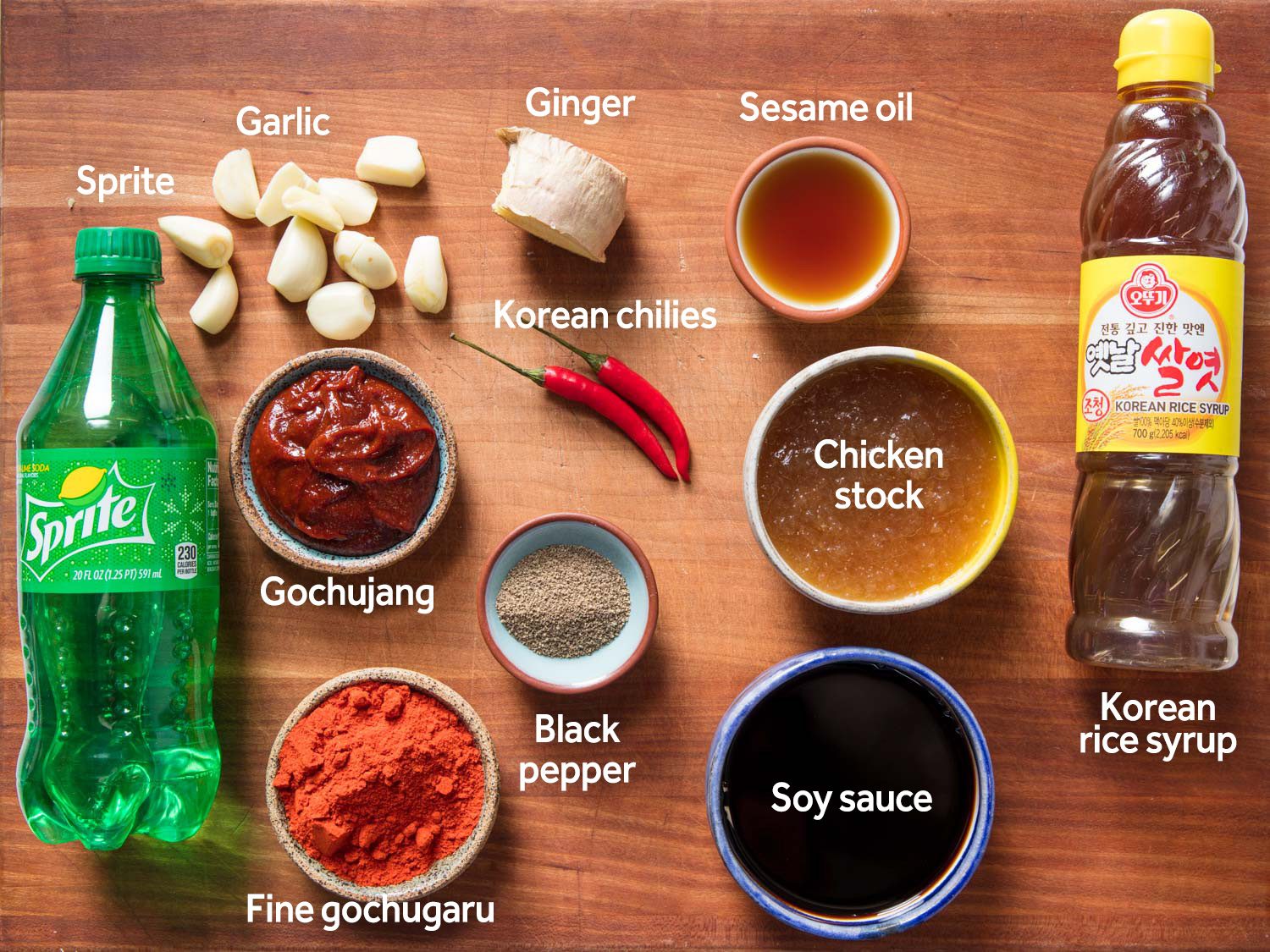
I whisk the gochugaru and gochujang together with soy sauce (for umami), chicken stock (meaty richness), toasted sesame oil (nutty and slightly bitter), and Korean rice syrup (sticky sweet). It’s easy to draw a comparison between this combination of spicy, sweet, and savory ingredients with that of a traditional American barbecue sauce. Buldak’s elements just have more heat, age, funk, and depth to them. As with American barbecue sauce, getting these flavors into balance is crucial; too much heat won’t make you any friends, but veering too far into the sweet lane would be even worse. With the foundation of the sauce squared away, I wanted to build on it by adding aromatics and fresh pops of heat to the mix.
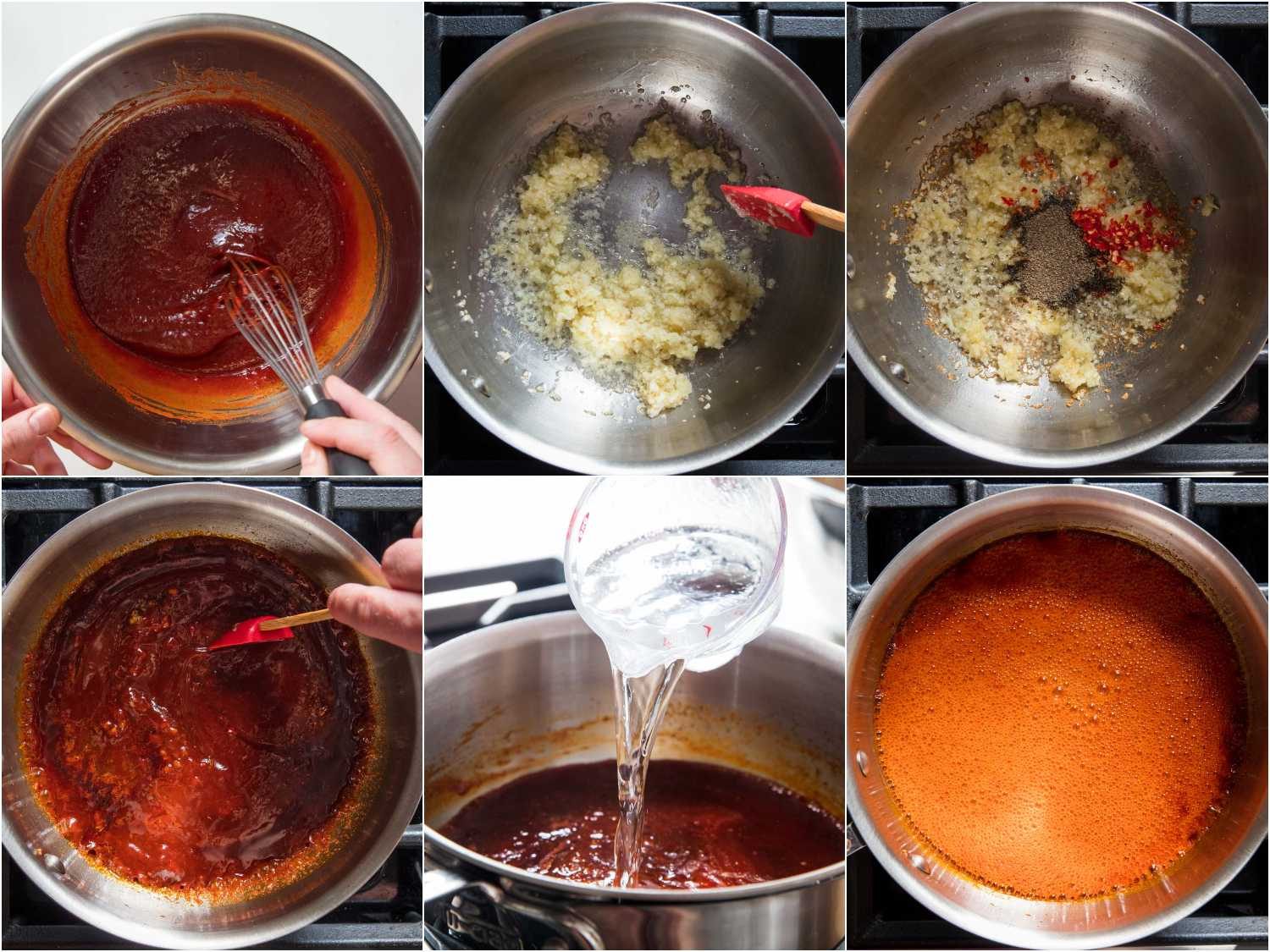
I start this process by sweating minced garlic and grated fresh ginger just until they release their aroma. We’re looking to rein in the aggressive punch of raw garlic without taking away all of its bite, while also coaxing out the floral heat of the ginger. Next, I up the heat levels by adding a tablespoon of freshly ground black pepper and some minced fresh chilies. Blooming these ingredients in hot oil releases their fat-soluble aromas, creating more layers of spiced heat for the buldak sauce. The fresh chilies bring bright, vegetal heat that you can taste up-front, while the toasted piquancy of black pepper complements the smoky, sweet heat of the gochujang mixture.
That mixture then gets added to the saucepan along with one final ingredient: Sprite. During initial rounds of testing, I couldn’t quite get my buldak sauce to the shiny glaze consistency that I wanted. I tried adding a touch more rice syrup, but that made the sauce too sweet. Simply reducing it more wouldn’t work either; the sauce should coat the chicken, not blanket it like a meatloaf glaze.
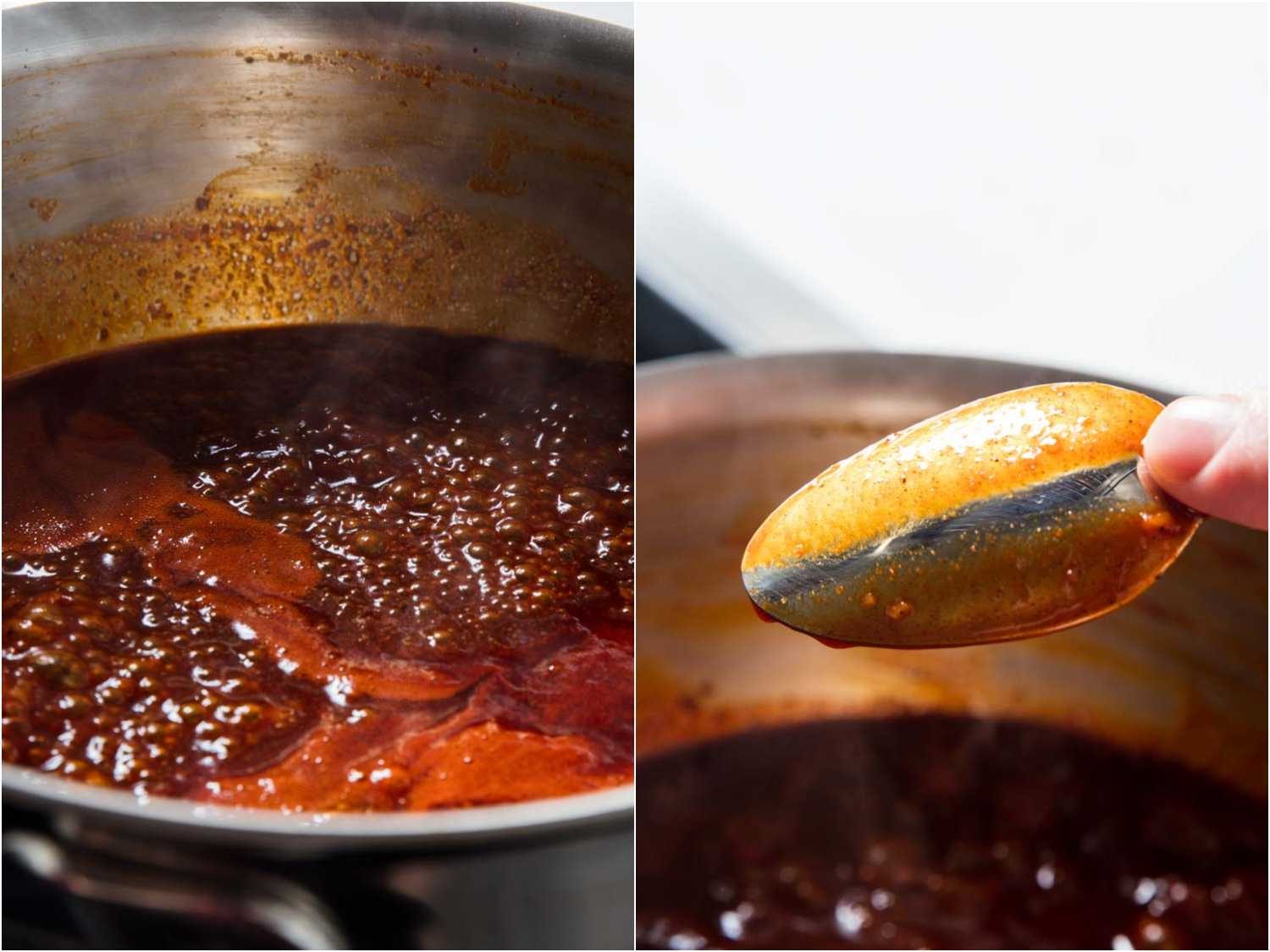
Frustrated, I reached out to someone I used to cook with in Chicago, a Korean-American friend with whom I’ve shared a few orders of late-night, postservice, pre-karaoke buldak. He immediately diagnosed my sauce issue: “You gotta have Sprite. It’s the key to getting that glazed sheen.” I ran out, grabbed a couple of sodas, and was in business. All I had to do was reduce the sauce until it coated the back of a spoon. Problem solved.
Once you reduce the sauce, it just needs to be cooled to room temperature, or it can be refrigerated for up to a week.
Thigh Maintenance
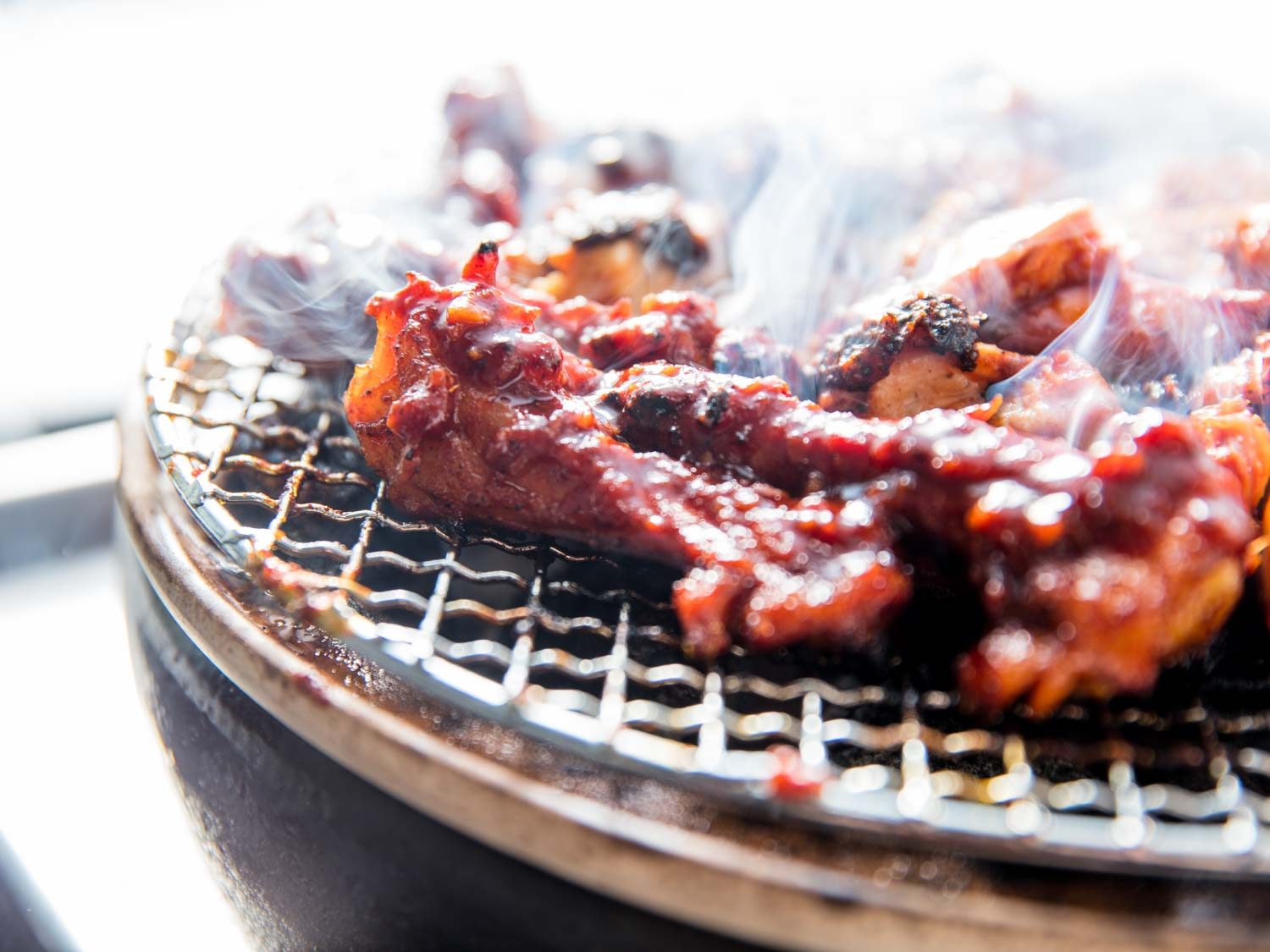
The chicken in buldak needs to be able to stand up to both the high heat of the sauce and the grill. Just like with American barbecue, the protein needs to have enough fat to cut through its hot and sweet glaze, and lean chicken breasts just won’t do here. They would also dry out too quickly during cooking, as we are looking to get a good amount of char, particularly on the skin of the chicken.
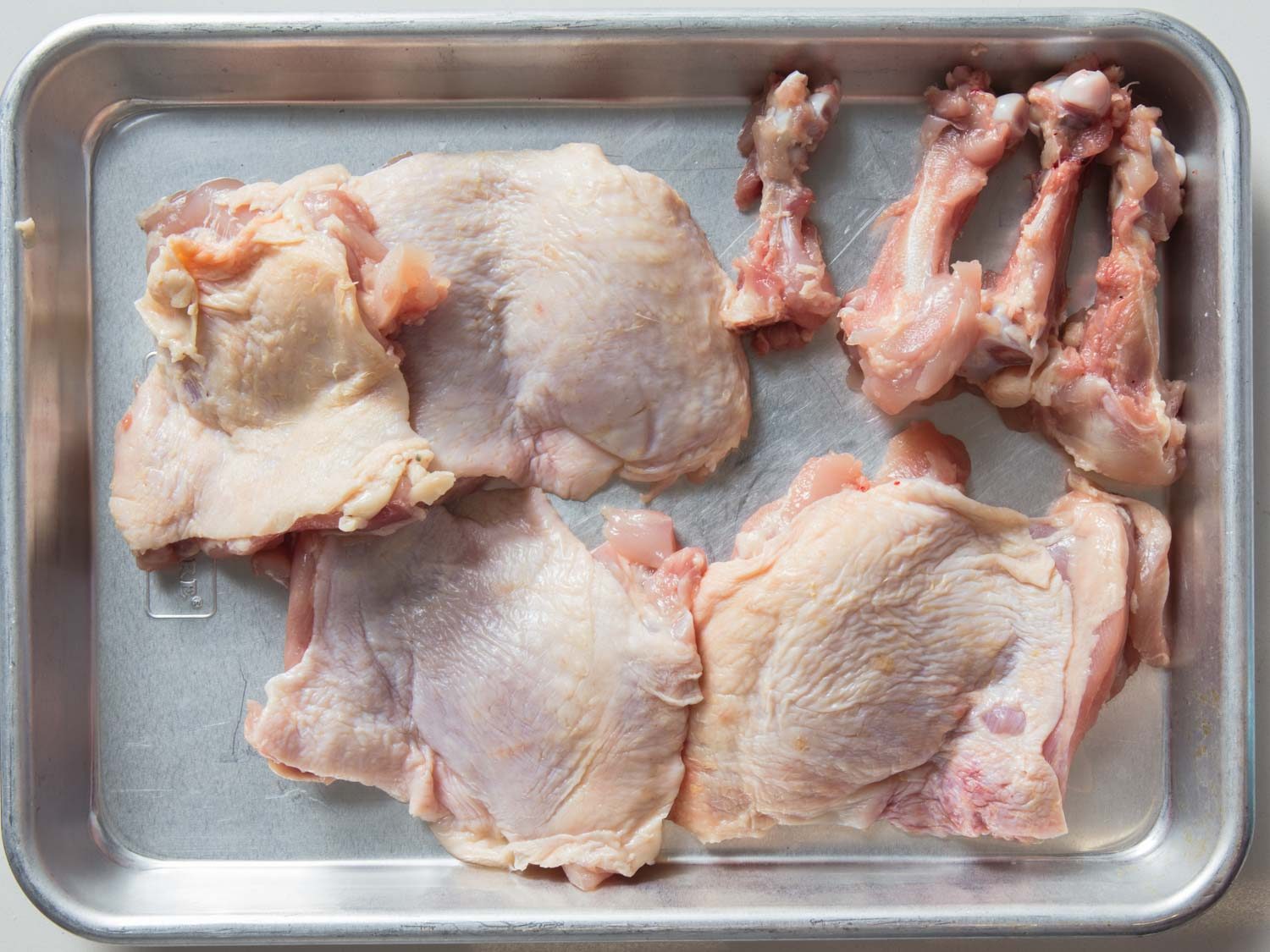
Our best bet for juicy, chargrilled chicken is bone-in, skin-on thighs. Because buldak is a shareable anju dish, the meat will eventually end up being cut into bite-size pieces, but it’s easier to start the chicken out on the grill as whole deboned thighs.
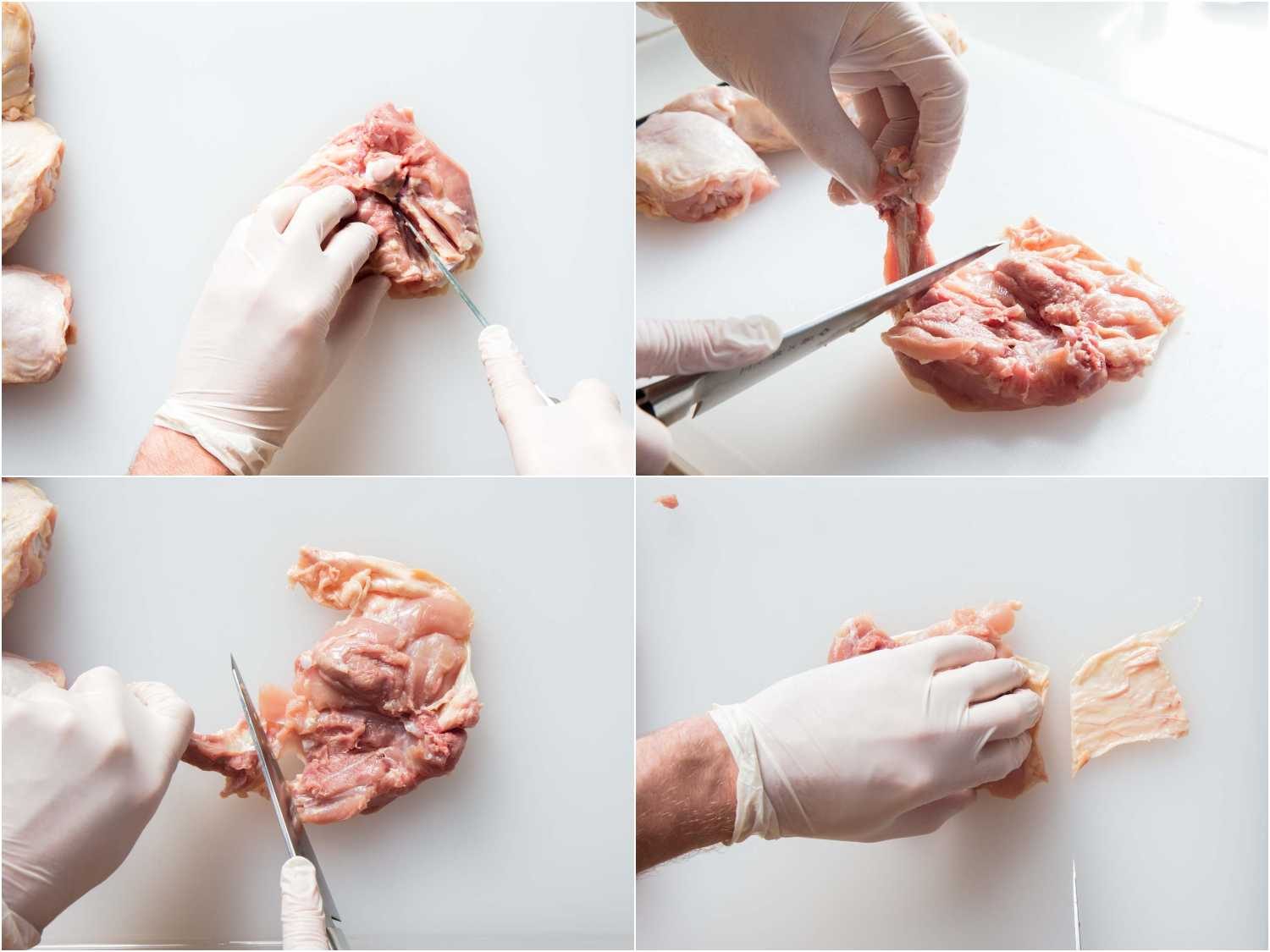
To debone the thighs, make incisions running along the length of the bone. Use the tip of your knife to fully expose the bone and then run the blade underneath it to separate it from the flesh. Normally, I would scrape the meat away from the bone as I release it from the thigh but not in this case. The bones will get grilled alongside the thighs, and leaving some meat on them makes for a more enticing snack to gnaw on. Toss the thighs and bones with half of the gochujang sauce and leave them to marinate while you fire up the grill.
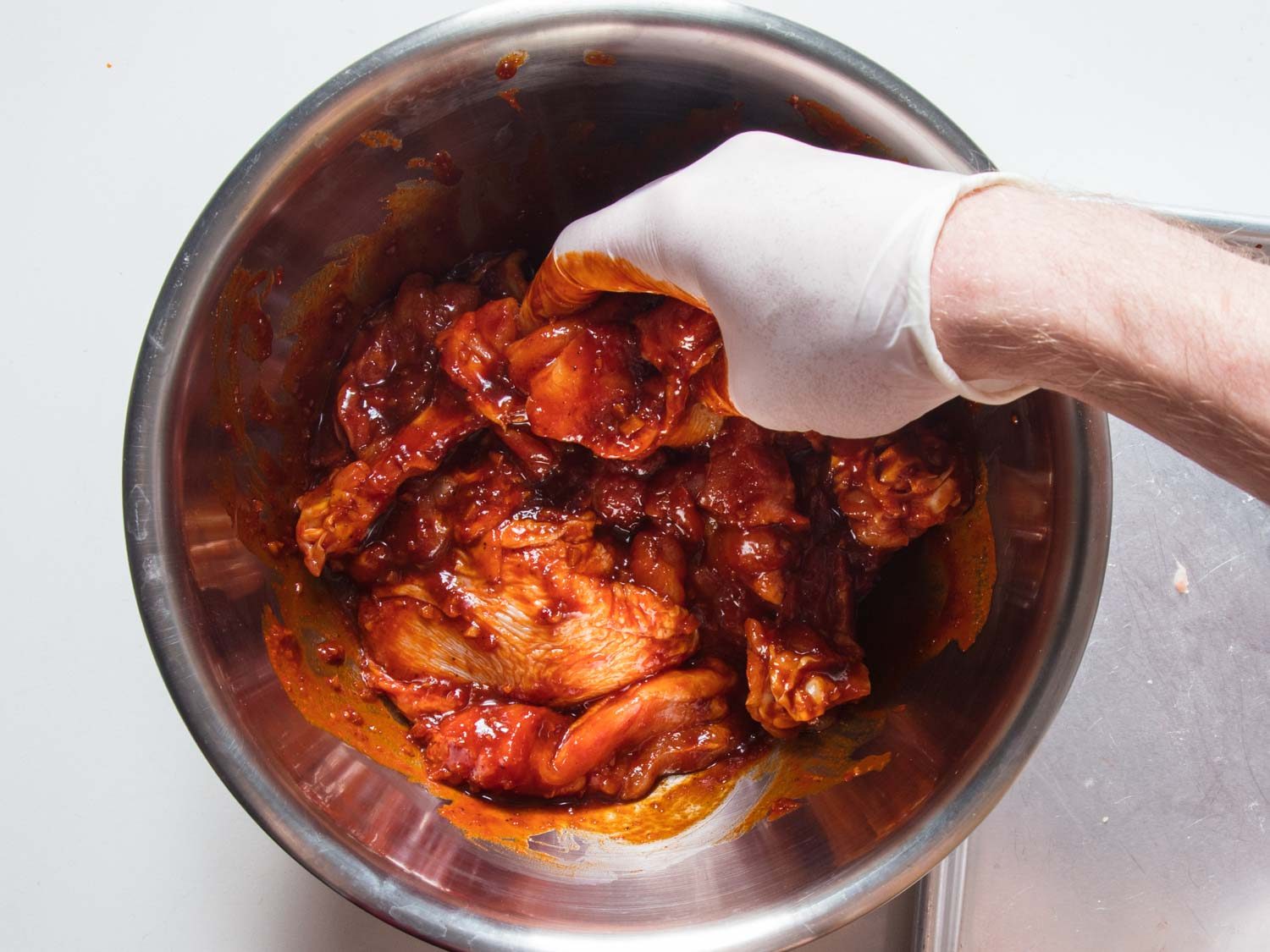
Side note: If you are hosting a game-day party and would prefer to use wings instead of chicken thighs, go for it. I tested the recipe with chicken wings, and it works really well. You’ll just need to adjust grilling times accordingly.
The Char Side
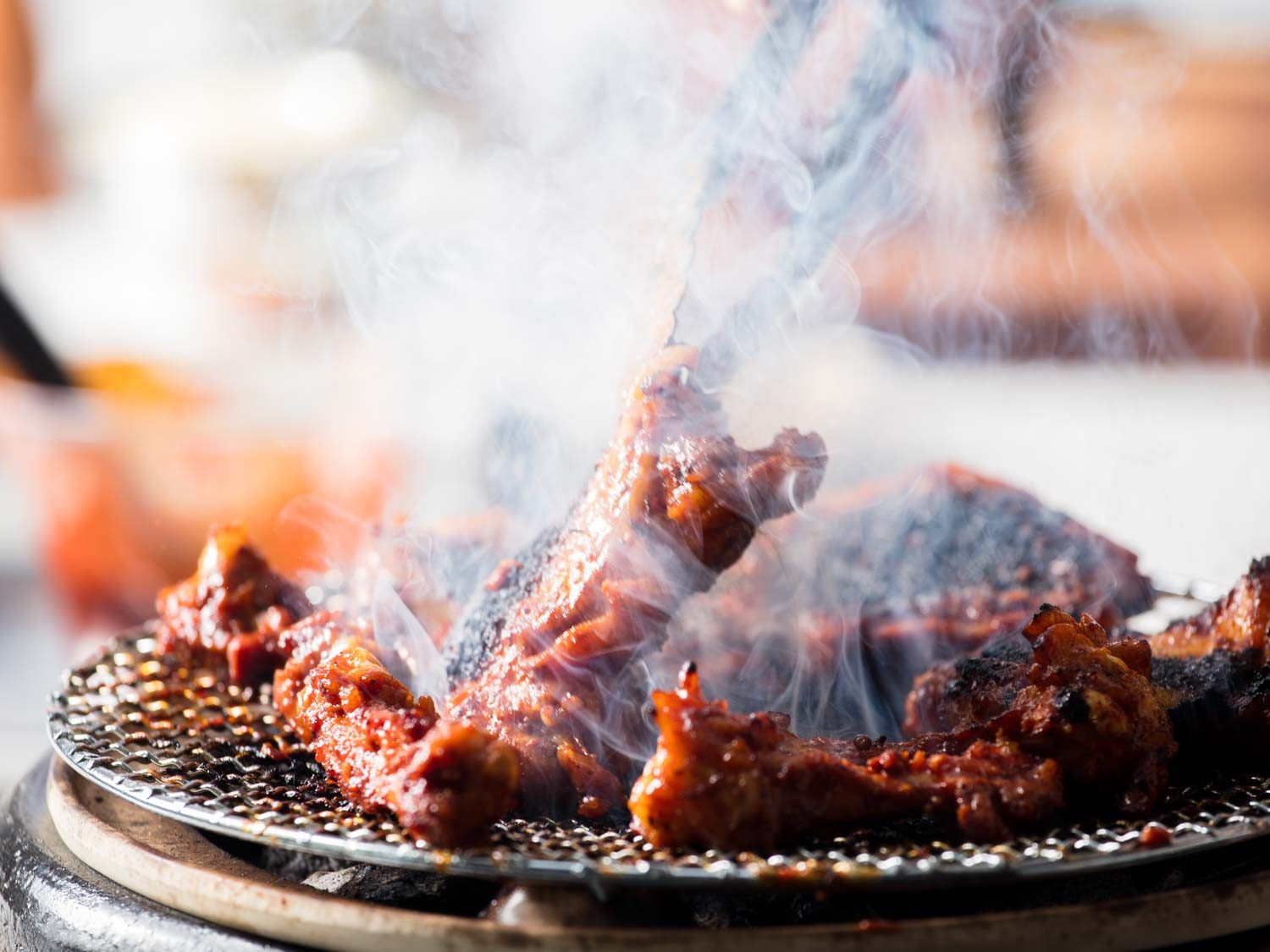
For the best buldak, use a charcoal grill. I’m not looking to fuel or settle the charcoal versus gas debate here. Odds are you’ve picked a grilling lane at this point and are going to stick with that. But during testing, tasters unanimously preferred buldak cooked with charcoal rather than gas. Either way, I start the thighs skin-side down over direct high heat, and the bones on the outer edges of the grill.
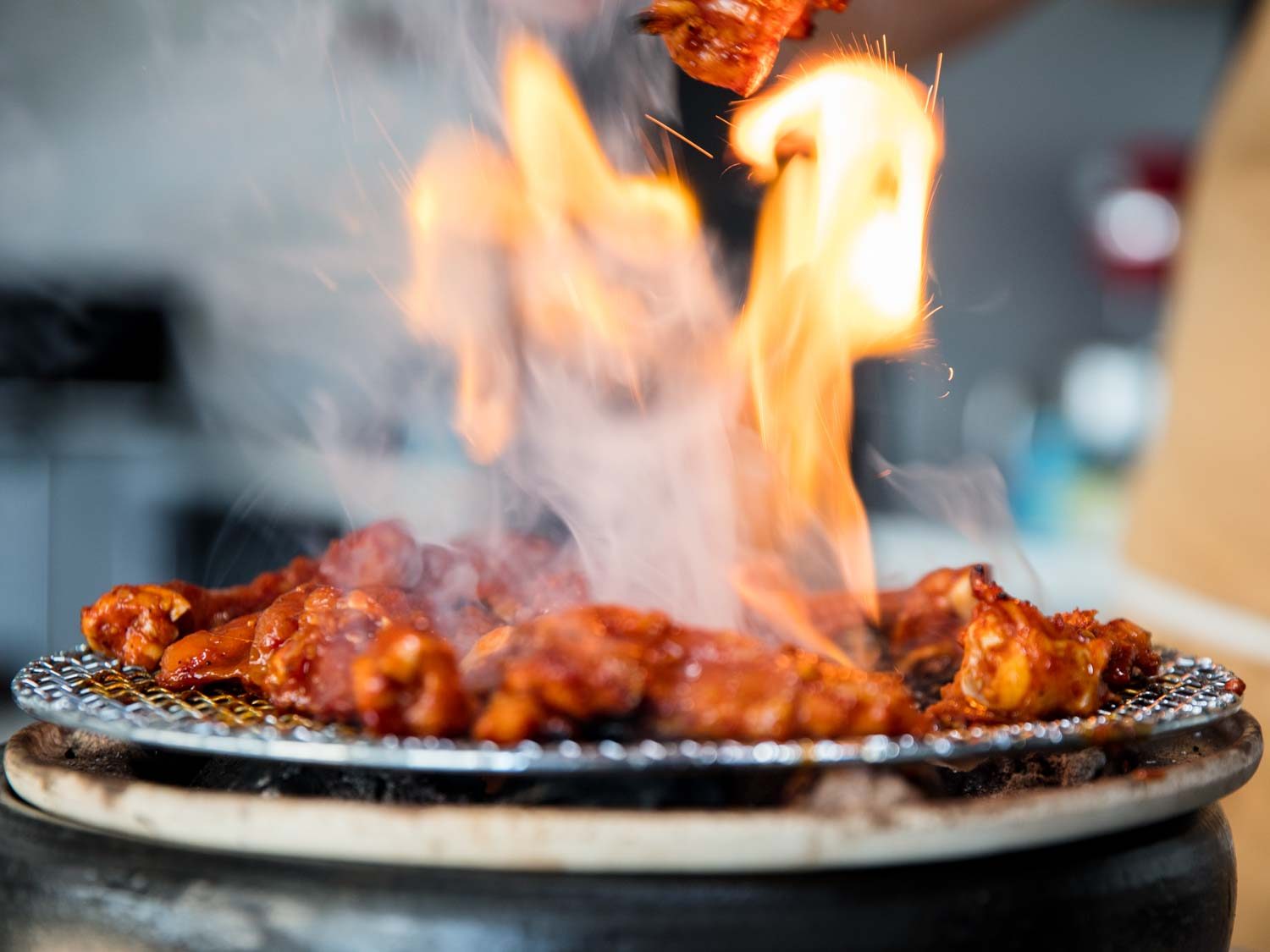
The fat on the skin will begin to render, and sauce will drip down onto the coals, producing aromatic compounds that vaporize and are deposited back into the chicken as it cooks. Once the skin on the thighs is well-charred, I flip them over and char them lightly on the flesh-side until the thighs are barely cooked through. During this time I also constantly turn the bones, making sure they pick up some char without getting burnt to a crisp.
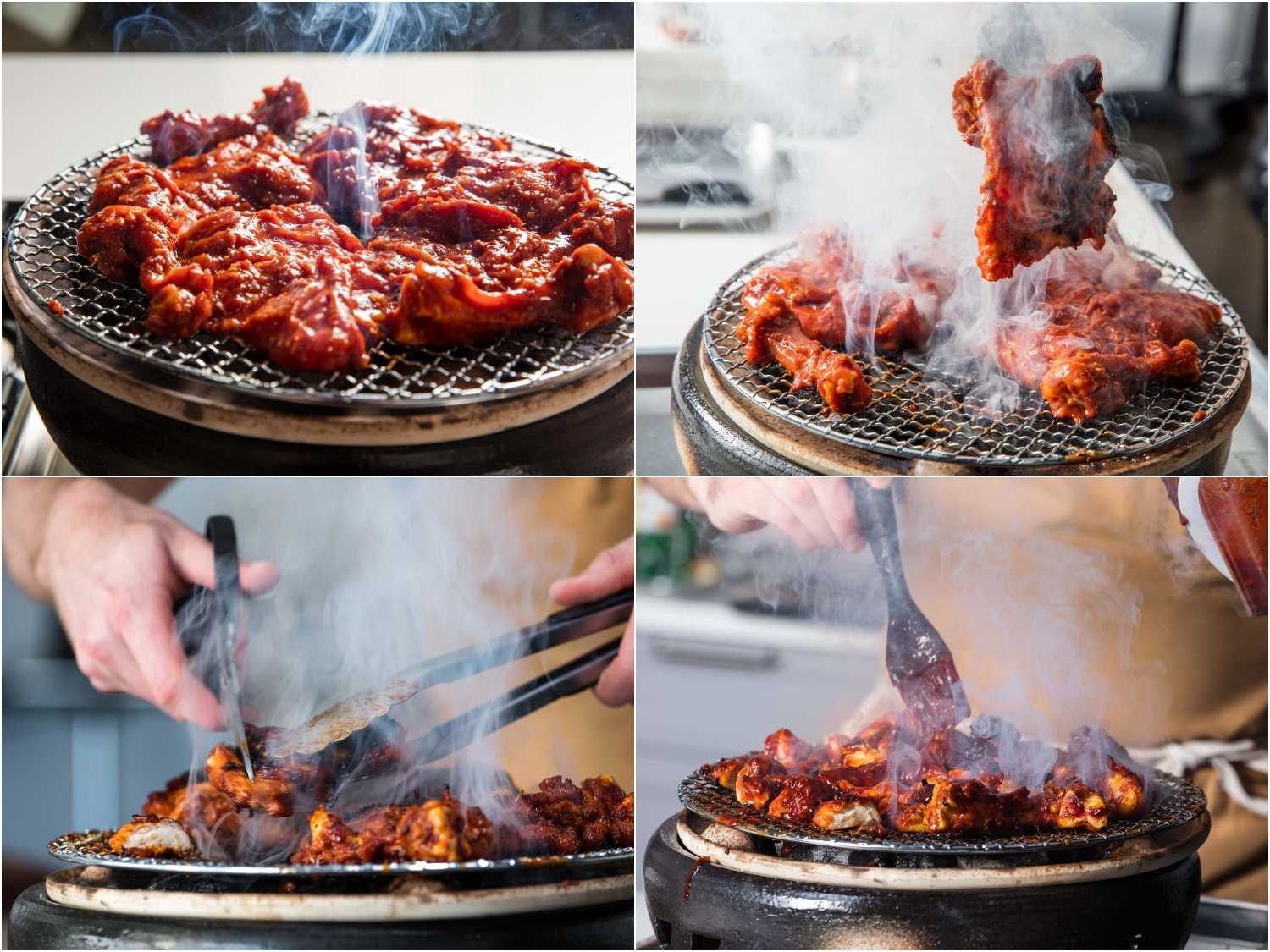
It’s now time to cut the thighs into bite-size pieces. I do this with poultry shears, which are commonly used for this purpose at Korean barbecue restaurants. Snipping the chicken into chunks directly over the grill is quick, and makes for less cleanup, but you can always dice the thighs up on a cutting board with your knife. Brush the chicken with the rest of the gochujang sauce, making sure the pieces are well-coated with the glaze. Once the chicken is fully cooked through, transfer the morsels and bones to a small cast iron skillet for the cheesy finale.
Say Cheese
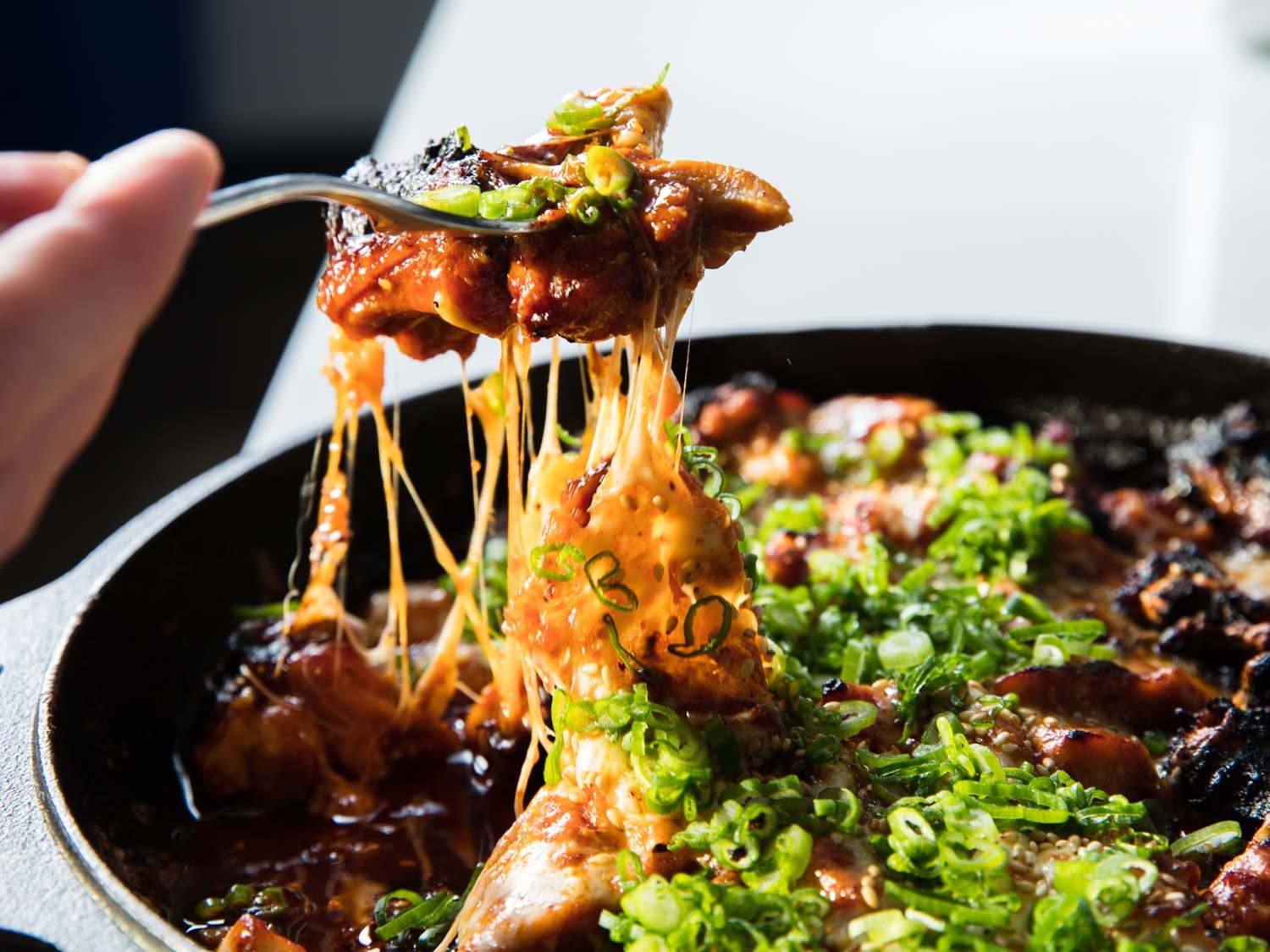
The first time I had buldak, I can’t say I was sold on the optional topping of melted mozzarella cheese. I misread it as an unnecessary and over-the-top flourish that would muddy the flavor of the dish. I was wrong; this is down and dirty bar-food alchemy. The gooey cheese melds with juicy bites of charred chicken, while also cooling the fire of the buldak sauce. And you will want that cooling effect, because the fire chicken burn is very real. I’d rather get the fire-extinguishing properties of dairy in melted cheese form than with a glass of milk.
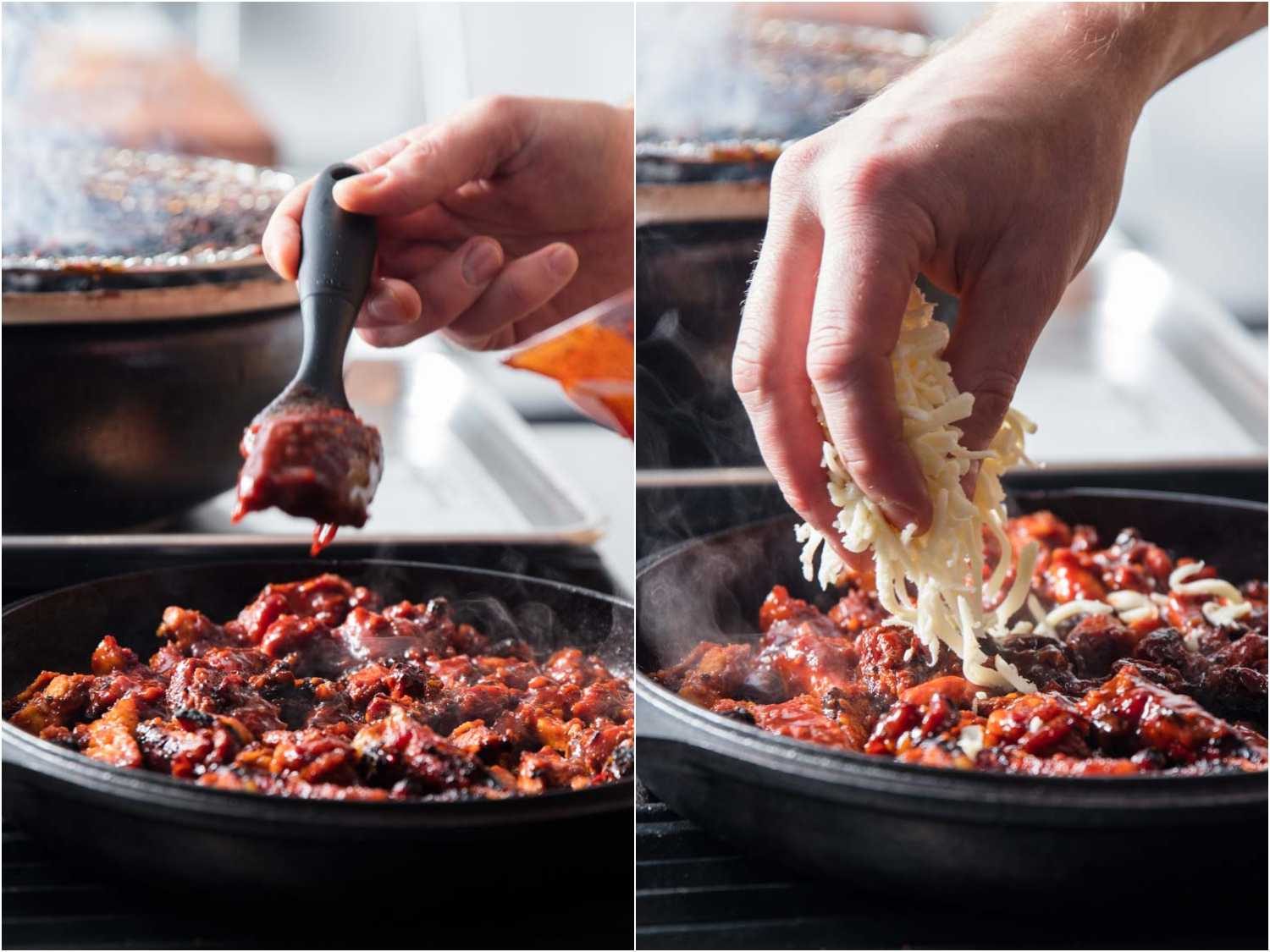
Scatter shredded, low-moisture mozzarella over the thigh pieces (I leave the bones uncovered so people know where they are) and pop the skillet under the broiler until the cheese is molten and bubbly. All you need now is some makgeolli, soju, and maybe some karaoke tunes.
No Grill? Use the Broiler
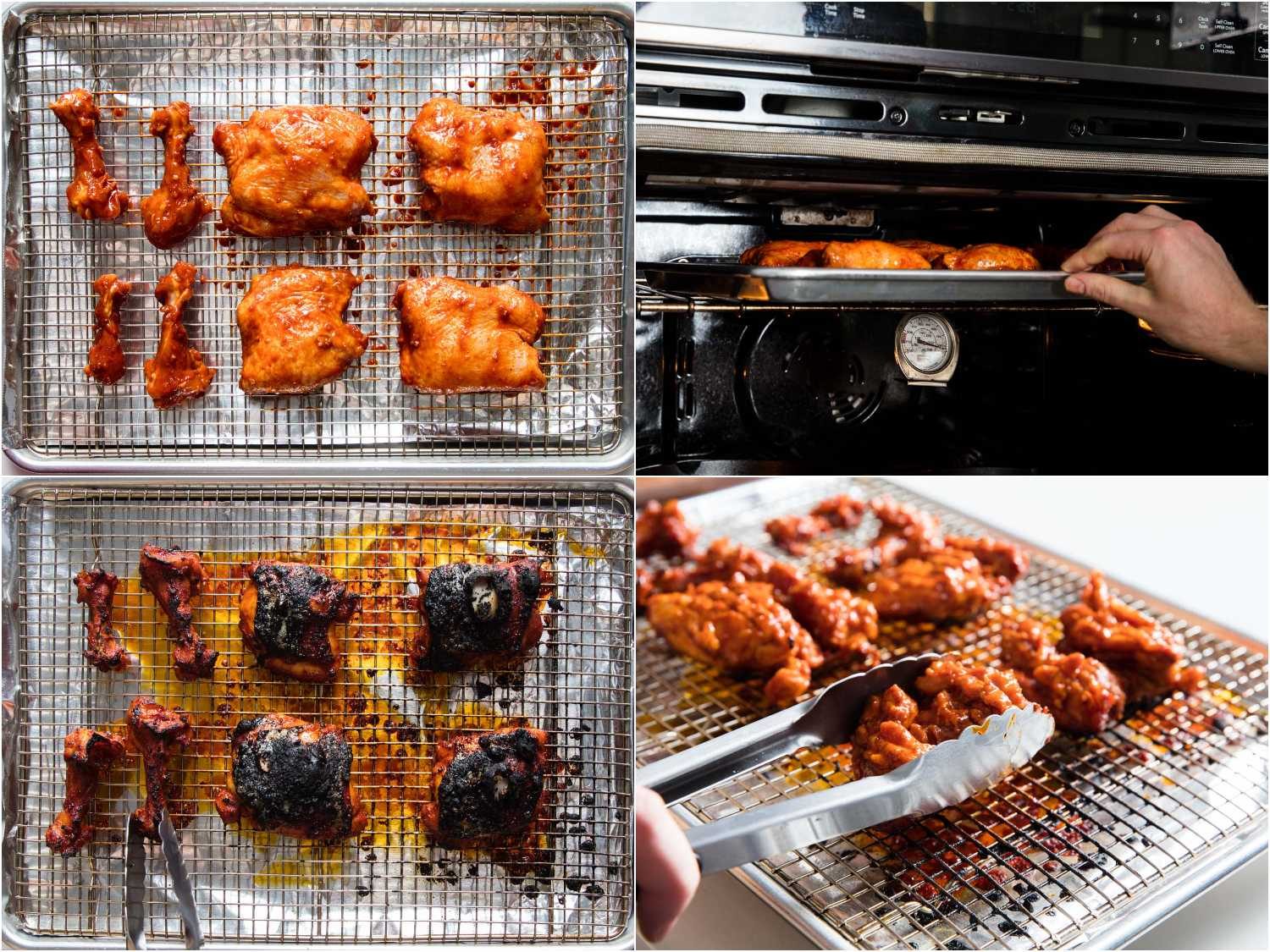
If grilling isn’t in the cards for you, I developed a broiler method that works really well, even if it doesn’t quite achieve the same depth of flavor of the charcoal-grilled version. To do this, I arrange the chicken and bones on a rack set inside a rimmed baking sheet, with the thighs skin-side up. I pop the sheet tray under the broiler for five minutes until the skin is charred. I then flip the thighs over and broil them for another five minutes.
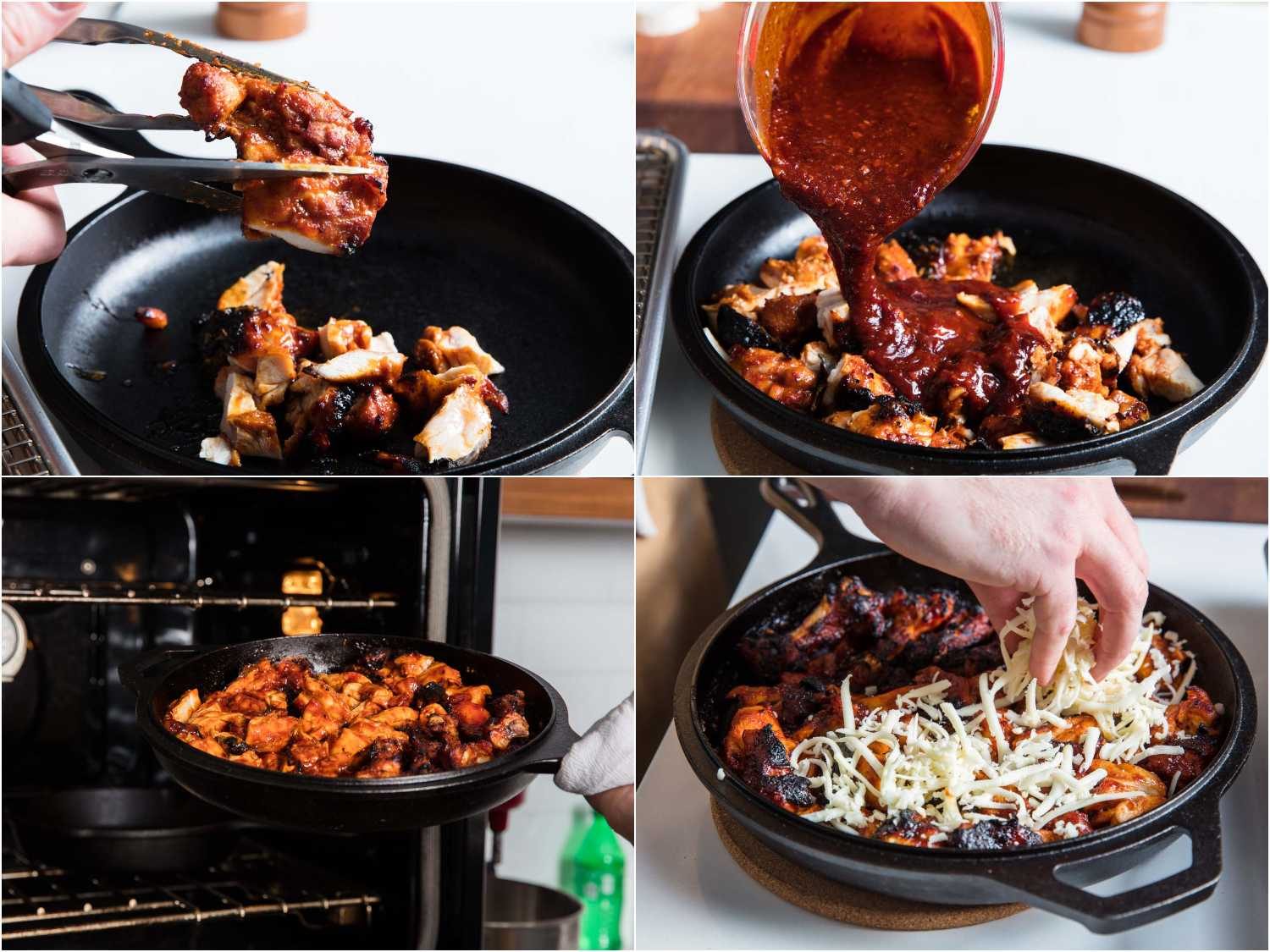
From there, I cut the chicken into pieces in the same way, and toss them in a small cast iron skillet with the remaining sauce. The skillet goes back under the broiler until the chicken is fully cooked through and the glaze is hot. Scatter cheese over the top, and melt it up. This version is slightly more greasy, as some of the chicken fat will render into the skillet, rather than over the coals of the grill, but it’s still delicious.
Can You Make This Dish Vegan? Absolutely
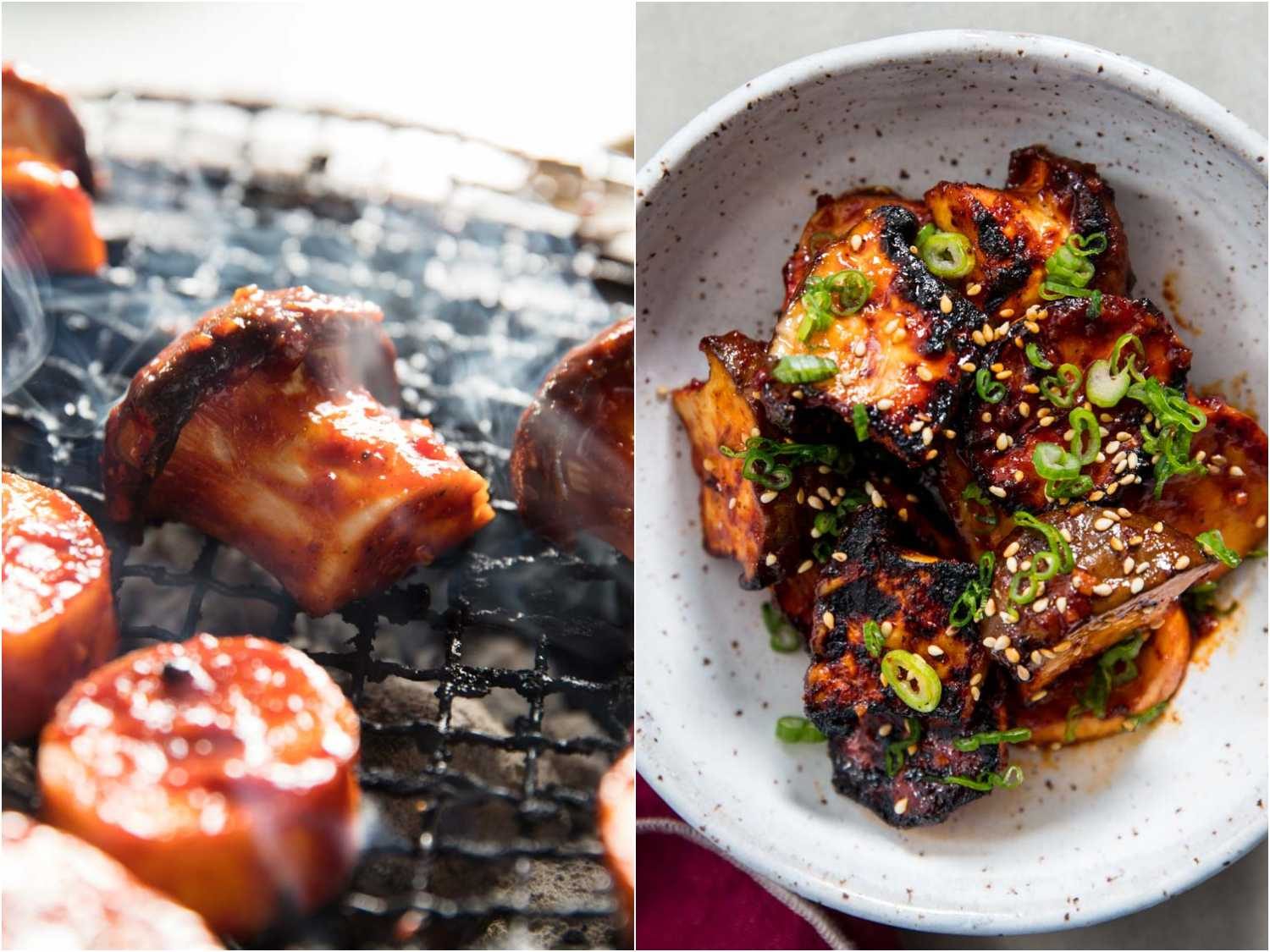
It’s pretty easy to make a fiery vegan version of this dish, if that’s something you’re into. I found that king trumpet mushrooms work really well with the sauce and grill up nicely. I cut the stems into 1-inch-thick rounds and halved the caps before tossing them with the sauce. If you are looking to make this recipe fully vegan, don’t forget to substitute vegetable stock for the chicken stock in the sauce. Grill the mushrooms for a few minutes on each side until they are tender and lightly charred. I garnished it with sesame seeds and scallions and didn’t miss the cheese one bit.
This post may contain links to Amazon or other partners; your purchases via these links can benefit Serious Eats. Read more about our affiliate linking policy.
Source link